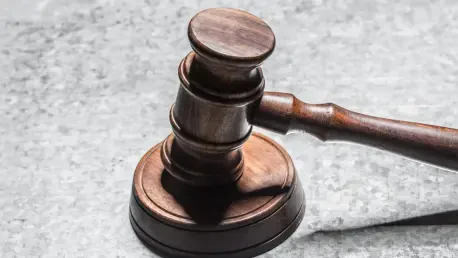In a striking turn of events, a federal agency tasked with upholding workplace fairness finds itself under the legal microscope as one of its own employees pursues a discrimination lawsuit that has now been cleared for trial. This case, unfolding in the Eastern District of Louisiana, involves an enforcement manager from the U.S. Equal Employment Opportunity Commission’s (EEOC) New Orleans field office who claims she was unjustly overlooked for a promotion due to her race, sex, and national origin. As an Indian-born U.S. citizen, the plaintiff alleges bias in the hiring process, pointing to derogatory remarks and procedural irregularities. This situation raises profound questions about whether the very institution meant to combat discrimination can itself be held accountable for similar failings. The progression of this lawsuit to trial underscores a critical examination of internal practices within a cornerstone of workplace equity enforcement.
Legal Battle Unfolds in Federal Court
Allegations of Bias in Promotion Decisions
The heart of this lawsuit lies in the plaintiff’s assertion that she was unfairly passed over for the position of field director in favor of a Black male candidate, despite her extensive tenure at the EEOC. Her claims are bolstered by troubling evidence, including derogatory comments made by the hiring manager about her accent and national origin. Reports indicate that the manager mocked her speech and criticized her use of leave to visit India, creating a hostile environment. Furthermore, the hiring process itself has come under scrutiny, as the selected candidate was initially deemed unqualified but was reconsidered after the manager’s intervention. Adding to the concerns, interviews for the position were scheduled during the plaintiff’s approved leave, potentially placing her at a disadvantage. These allegations paint a picture of systemic bias that, if proven, could undermine trust in the agency’s commitment to fairness. The court’s decision to allow this case to proceed reflects the seriousness of the claims and the need for a thorough investigation by a jury.
Judicial Ruling on Discriminatory Intent
U.S. District Court Judge Eva Dossier’s recent ruling to deny the EEOC’s motion for summary judgment has paved the way for a jury trial, emphasizing that while the chosen candidate’s qualifications—such as a military background—were comparable to the plaintiff’s long service, the selection alone does not prove discrimination. Instead, the judge pointed to the hiring manager’s inappropriate behavior and procedural missteps as key factors that could suggest discriminatory intent. The court clarified that employment laws are not designed to challenge business decisions but to address potential bias, drawing on precedents from the 5th U.S. Circuit Court of Appeals. This ruling highlights the importance of scrutinizing not just outcomes but the processes and interactions leading to those outcomes. As the case heads to trial, it will be up to the jury to determine whether personal biases influenced professional decisions, setting a precedent for how such allegations are handled within federal agencies.
Broader Implications for the EEOC
Institutional Accountability Under Scrutiny
Beyond the specifics of this individual lawsuit, the case casts a spotlight on broader challenges facing the EEOC as an institution dedicated to eradicating workplace discrimination. The irony of an agency created to enforce anti-discrimination laws facing accusations of internal bias is not lost on observers. This lawsuit is not an isolated incident; other legal actions against the EEOC have surfaced recently, including a claim by an LGBTQ+ advocacy group alleging inadequate protection for transgender workers and a dispute with a New Mexico school district over a discrimination charge. These pending cases suggest a pattern of legal scrutiny that questions whether the agency consistently upholds the principles it champions. The outcome of the current trial could influence public perception of the EEOC’s credibility and its ability to enforce fairness without internal contradictions. This moment serves as a critical test of whether federal agencies can model the standards they impose on others.
Navigating Procedural Fairness and Public Trust
Another layer of complexity in this saga is the EEOC’s defense, which asserts that the plaintiff ranked lowest among interviewed candidates and that the selection process adhered to standard scoring practices. Despite this, procedural flaws—such as scheduling interviews during the plaintiff’s absence—undermine the agency’s position. The EEOC has chosen not to comment on personnel matters, maintaining a neutral stance amid the controversy. However, the allegations of inappropriate remarks by a hiring manager and questionable timing in the process raise significant concerns about transparency and fairness. As this case progresses, it will likely prompt discussions on how federal agencies can strengthen internal policies to prevent even the appearance of bias. Restoring public trust will depend on addressing these procedural gaps and ensuring that hiring practices align with the agency’s mission. The trial’s outcome could serve as a catalyst for reform, pushing for stricter oversight and accountability within the EEOC to safeguard its reputation as a defender of workplace equity.









